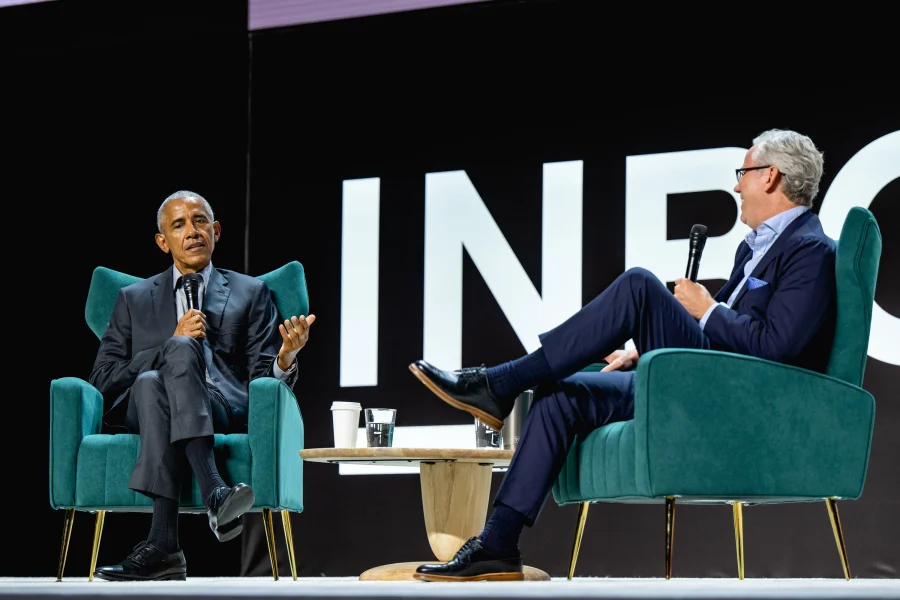Inbound
September 16, 2025What Amy Poehler Taught Us About Creative Confidence at INBOUND 2025
Session Recap

At INBOUND 2022, President Barack Obama sat down with Brian Halligan (HubSpot’s co-founder and executive chairperson) for a conversation on community and leadership. Read on for his top insights and takeaways.
Shortly after his administration began, President Barack Obama noticed a pattern. "In the situation room, you have people sitting around the table, all the big cheeses—the Joint Chiefs of Staff, and the Secretary of State and Defense," President Obama noted.
It’s a familiar visual for many of us: a conference room table seated with (mostly) men, ready to deliver a clean, buttoned-up memo. Outside of the table? A perimeter of seats lined up against the walls, filled with (mostly) women and junior staffers. For many industries, this is standard practice. Executives get a seat at the table, and their junior staff and assistants sit on the perimeter to take notes.
But Obama knew that these junior staff weren’t just taking notes; they were the ones feeding the memos to the higher-ups at the table—and probably knew more intel about the situation than their bosses.
So, how’d he widen that scope of intel? Obama would look at those on the perimeter, and point to a junior staffer. “‘You,’” he’d start. “‘What did you think?’”
”Initially, they'd be shocked because their assumption was they wouldn't speak in these meetings,” he recounts. Obama cites this representation as a no-brainer success in decision-making: “That's been documented. Studies have been shown.”

Representation is great—but as so many of us are learning, representation alone won’t change systems and cultures. Obama is keen about the crucial step required beyond representation:
“You also have to build culture so that people feel free to talk.” — President Barack Obama
Listening, as it turns out, is something of an underrated practice. Yes, we need clarity and executive summaries to calculate risk and make astute decisions. And we need nuance and a diversity of voices to complicate the narrative anytime we’re tempted to see the easy, incomplete story. For Obama, the art of listening yielded two particular advantages:
“One, it made me confident that I was making good decisions, even if they were hard and even when sometimes the decision turned out not to have the outcome I wanted,” he says. “I was at peace in saying that. We were thorough. We were prepared.”
A heavier focus on the input than the output. We can get behind that kind of integrity.
“The second thing,” Obama says, “is it gave everybody ownership into the decision so that when a decision went wrong, there wasn't a bunch of sniping and who was right and who was wrong.”
Ownership. We like that.
Beyond the White House, Obama brings this practice into his everyday life. He might not get called into the situation room as often as he used to, but in the face of conflict, divisiveness, and polarizing conversations, Obama relies on this practice of listening to remind himself of our shared humanity.
“An article of faith for me and my politics . . . is that at some level, we are all connected. We have a common humanity. You are understandable to me. And if I'm listening, I can find a place in which we see each other and that we may be able to change each other's minds, or at least agree to live together without beating each other over the head.”
In an age where that can be a lot to ask for—we’ll take that.
During the conversation, whether Obama was discussing his presidency or the projects he pursues today, one recurring motif kept coming up: if we want to build anything—be it community, culture, or crisis resolution—we must make room to pause and listen to one another.
Want access to more content like this? Subscribe to our email list below for first dibs all things INBOUND: